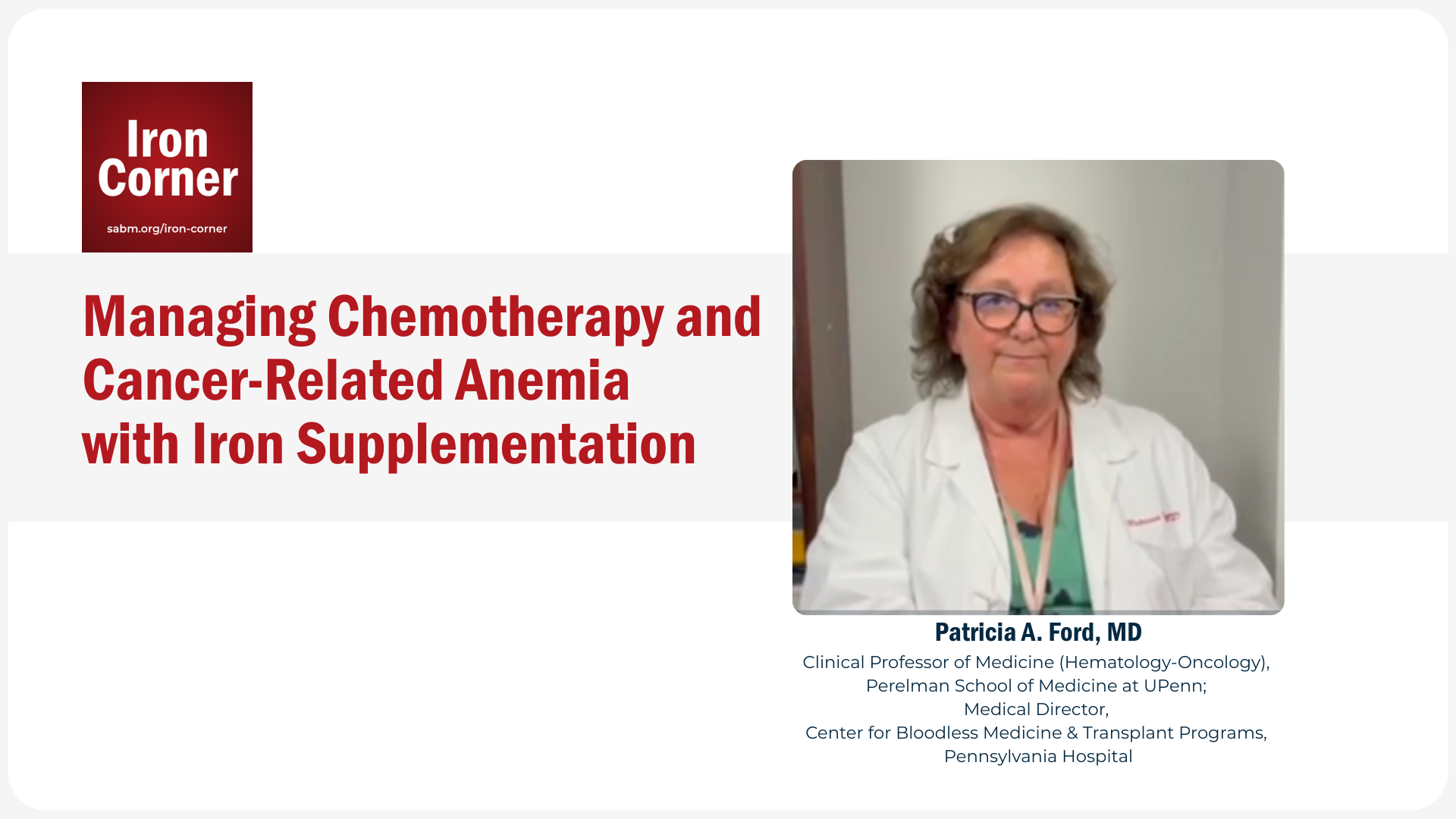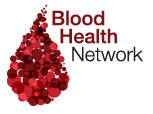|
Managing Chemotherapy and Cancer-Related Anemia with Iron Supplementation |
| ABSOLUTE IRON DEFICIENCY | FUNCTIONAL IRON DEFICIENCY | IRON REPLETE | |
| Ferritin ng/ml | <30 | 30-800 | >800 |
| TSAT % | <20 | 20-50 | >50 |
What Treatments Should Be Considered?
The anemia of cancer is very often treated with transfusions without first assessing iron status or considering the use of either IV iron or ESA. Iron deficiency can be absolute (usually related to bleeding) with low iron stores, or functional iron deficiency. Iron-restricted erythropoiesis can occur when ESA therapy stimulates erythropoiesis without adequate iron delivery from storage sites.
The ESA are effective in increasing hemoglobin levels and decreasing transfusion requirements in chemotherapy-induced anemia but data has linked their use to inferior survival and worse cancer outcomes so are not recommended to be used in anemic cancer patients not on treatment or in whom treatment is given with the intent to cure. This may be an opportunity to use iron supplementation.
Which Is More Effective – Oral Iron or Intravenous Iron?
Although oral iron is more convenient and less expensive it may not be tolerated due to gastrointestinal side effects, may not be absorbed in functional iron deficiency, and may be incapable of rapidly repleting iron stores.
There have been multiple clinical trials that have been published using IV iron either as monotherapy or in combination with ESAs to treat CRA. These studies have demonstrated improved hemoglobin levels, reduced transfusions, and improved quality of life.
Is IV Iron Safe?
Any of the current IV iron preparations can be used with relative safety. Minor infusion reactions occur about 1 in 200 infusions with major infusion reactions 1 in 200,000. There were no deaths attributed to IV iron nor increase in infections.
Expert Guidelines
Several organizations have developed recommendations on iron monitoring and replacement in cancer patients.
- American Society of Hematology (ASH) and American Society of Clinical Oncology (ASCO) The evidence suggests that adding iron supplementation to ESA therapy improves hematopoietic response and reduces the likelihood of RBC transfusions.
- The National Comprehensive Cancer Network, (NCCN) recommends monotherapy with iron (preferably IV) for absolute iron deficiency (ferritin <30 ng/mL and TSAT <20%) and in patients using ESAs with ferritin between 30 and 800 ng/mL and TSAT between 20 and 50%. IV iron can reduce the number of transfusions in patients with functional iron deficiency.
- The European Society for Medical Oncology (ESMO) recommends iron profile monitoring. IV iron replacement is recommended in patients with iron deficiency to produce an increment in hemoglobin and reduce the need for transfusion.
- The European Organization for Research and Treatment of Cancer (EORTC) recommends iron replacement to be restricted to patients with absolute or functional iron deficiency.
Recommended References
These review articles provide summaries to better understand the anemia of cancer and iron supplementation.
- HIGHLY RECOMMENDED ARTICLE: Rodgers GM. Update on iron supplementation in patients with cancer-related anemia. Expert Review of Hematology 2024 17 (8), 505-514.
- Gilreath JA and Rodgers GM. How I treat cancer- associated anemia. Blood 2020:136 (7):801-813.
- Ganz T. Anemia of Inflammation. N Engl J Med 2019:381:1148-1157.
- Anand S, Burkenroad A ,Glaspy J. Workup of Anemia in Cancer. Clinical Advances in Hematology & Oncology. 2020 ;18 (10)640-646
- Avni T, Bieber A et al. The safety of intravenous iron preparations: systematic review and meta-analysis. Mayo Clin Proc. 2015:90(1):12-23.
Additional References
- Knight K, Wade, S Balducci L. Prevalence and outcomes of anemia in cancer: a systematic review of the literature. Am J Med. 2004: 116 (suppl 7A) 11S-26S.
- Macciò A, Madeddu C, Gramignano G, et al. The role of inflammation, iron, and nutritional status in cancer-related anemia: results of a large, prospective, observational study. Haematologica 2015; 100:124.
- Weiss G, Goodnough LT. Anemia of chronic disease. N Engl J Med 2005; 352:1011.
- Ganz T. Anemia of Inflammation. N Engl J Med 2019; 381:1148.
- Coyne D. Iron indices: what do they really mean? Kidney Int Suppl. 2006: (101): S4-S8.
- Goodnough LT. Iron deficiency syndromes and iron restricted erythropoiesis. Transfusion. 2012;52(7):1584- 1592.
- Tonia T, Mettler A, Robert N, et al. Erythropoietin or darbepoetin for patients with cancer. Cochrane Database Syst Rev 2012; 12:CD003407.
- Bohlius J, Bohlke K, Castelli R, et al. Management of Cancer-Associated Anemia With Erythropoiesis-Stimulating Agents: ASCO/ASH Clinical Practice Guideline Update. J Clin Oncol 2019; 37:1336.
- Rodgers GM, Gilreath JA. The role of intravenous iron in the treatment of anemia associated with cancer and chemotherapy. Acta Haematol. 2019:142(1):13-21.
- Jang JH, Kim Y, Park S, et al. Efficacy of intravenous iron treatment for chemotherapy-induced anemia A prospective phase II pilot clinical trial in South Korea. Plos Med. 2020:17(6);e1003091
- Gilreath JA, Makharadze T, Boccia RV, et al. Efficacy and safety of ferric carboxymaltose injection in reducing anemia in patients receiving chemotherapy for non-myeloid malignancies: A phase 3, placebo controlled study (IRON CLAD) (abstract) Blood 2019:134. Abstract 3535
- Rodgers GM. Update on iron supplementation in patients with cancer-related anemia. Expert Review of Hematology 2024 17 (8), 505-514.
- Avni T, Bieber A et al. The safety of intravenous iron preparations: systematic review and meta-analysis. Mayo Clin Proc. 2015:90(1):12-23.
- Management of Cancer-Associated Anemia With Erythropoiesis-Stimulating Agents: ASCO/ASH Clinical Practice Guideline Update. Bohlius J, Bohlke K, Castelli R, et al. Blood Advances. 2019;3(8):1197-1210






